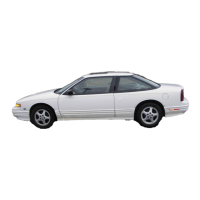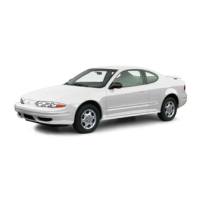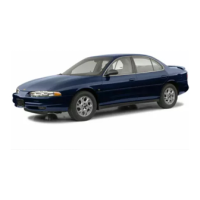Your
Driving and
the
Road
156
Off-Road Recovery
You
may find sometime that your right
wheels have dropped off the edge of a
road onto the shoulder while you’re
driving.
If
the level of the shoulder is only
slightly below the pavement, recovery
should be fairly easy. Ease off the
accelerator and then,
if
there is nothing
in the way, steer
so
that your vehicle
straddles the edge of the pavement.
You
can turn the steering wheel up to
‘/4
turn until the right front tire contacts
the pavement edge. Then turn your
steering wheel to go straight down the
roadway.
If the shoulder appears to be about four
inches
(100
mm)
or more below the
pavement, this difference can cause
problems. If there is not enough room
to pull entirely onto the shoulder and
stop, then follow the same procedures.
But
if
the right front tire scrubs against
the side of the pavement, do
not
steer
more sharply. With too much steering
angle, the vehicle may jump back onto
the road with
so
much steering input
that it crosses over into the oncoming
traffic before you can bring it back
under control. Instead, ease
off
again on
the accelerator and steering input,
straddle the pavement once more, then
try again.
Passing
The driver of a vehicle about to pass
another on a two-lane highway waits for
just the right moment, accelerates,
moves around the vehicle ahead, then
goes back into the right lane again.
A
simple maneuver?
Not necessarily! Passing another vehicle
on
a
two-lane highway is a potentially
dangerous move, since the passing
vehicle occupies the same lane as
oncoming traffic for several seconds.
A
miscalculation, an error in judgment, or
a brief surrender to frustration or anger
can suddenly put the passing driver face
to face with the worst of all traffic
accidents-the head-on collision.
So
here are some tips for passing:
“Drive ahead.” Look down the road,
to the sides, and to crossroads for
situations that might affect your
passing patterns. If you have
any
doubt whatsoever about malting a
successful pass, wait for a better time.
I

